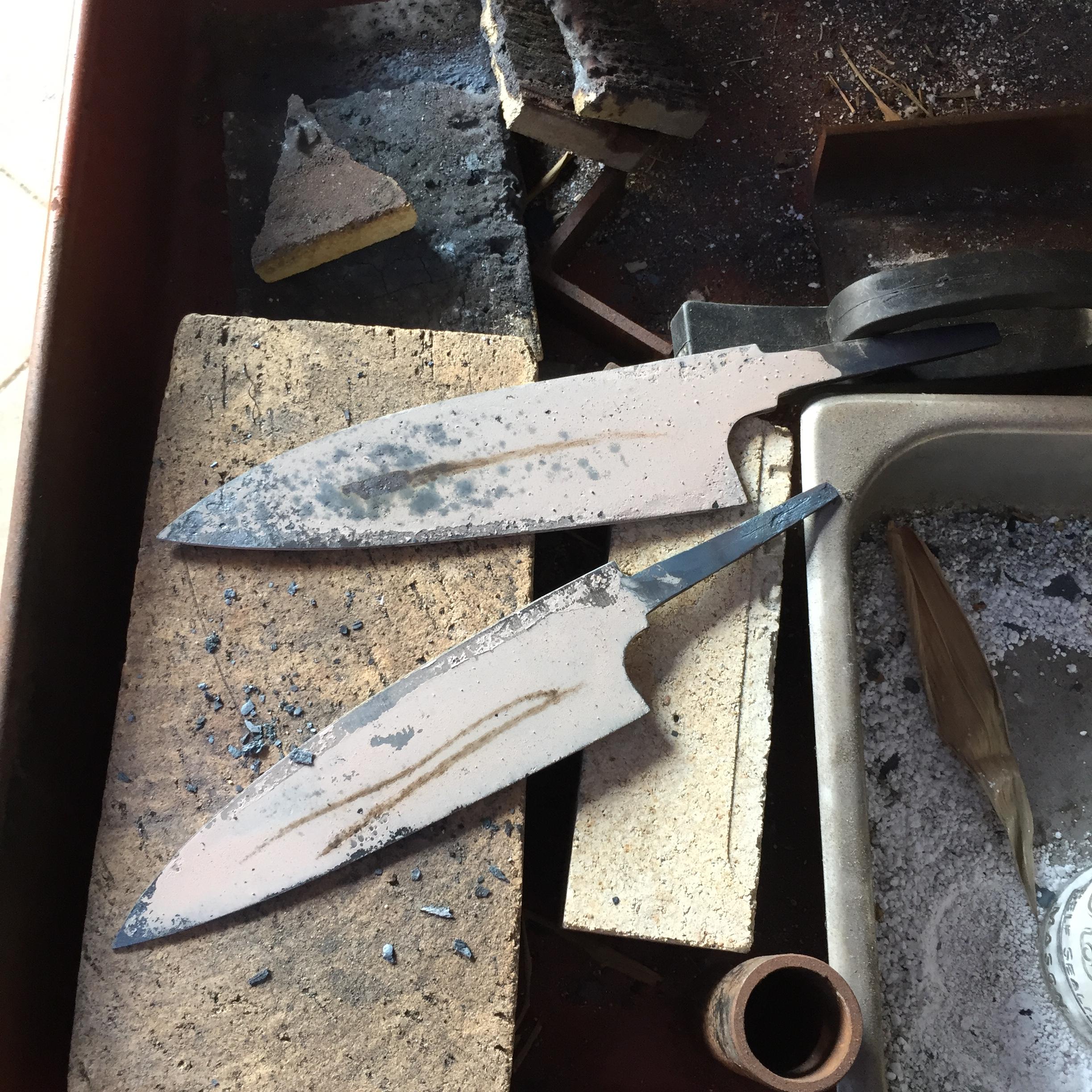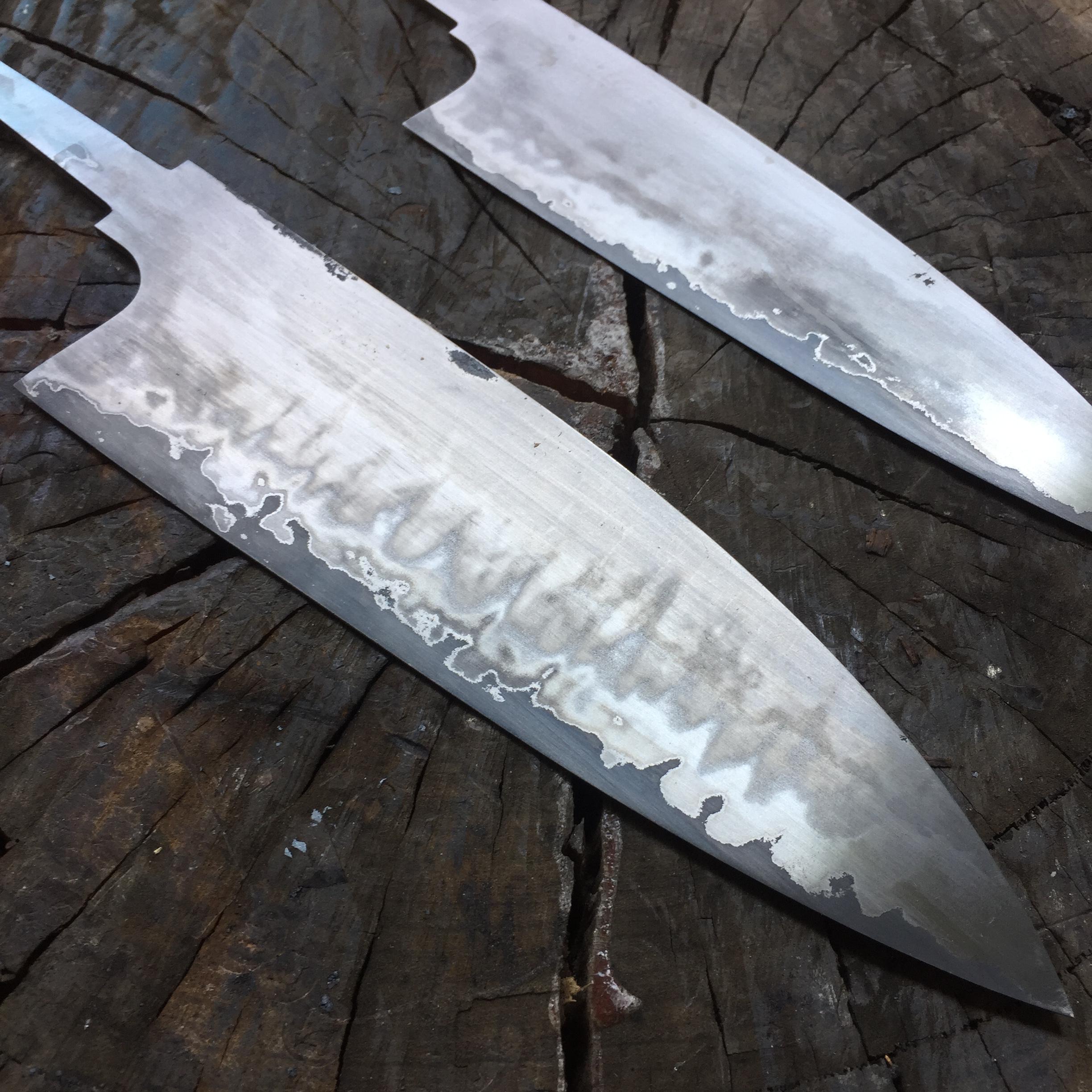- Joined
- Sep 29, 2015
- Messages
- 487
I just finished quenching 2 white steel #2 blades I've been working on.
Before heat treatment I normalized the blades each blade 3 times. For that proscess I used what I saw in a video by Murray Carter, setting the blades in ashes to insulate the heat while cooling. I did a 5min soak in the gas forge, paying extream attention to the color of the steel (I have been practicing this for almost a year now). I was afraid to do a full water quench and crack such a hard to get steel, so I did a interrupted quench. The quenching solutions were warm salt water and warm canola oil. I quenched for 1 second in the water then finished in the canola oil. No pings and no pops.
After the quench I rushed to get the blades in the tempering oven as fast as I could. I was very afraid that the blades would develope micro cracks if I didn't temper them right away. On the way to the oven I noticed that there was what looked like to be a hamon. It was too high up to be the separation between the core and cladding, the cladding comes about 3/16th from the edge.
After doing the second blade I noticed the same features while rushing to the oven. My thoughts are that this is carbon diffusion from the normalizing cycles I did and soak. I did not forge the blades because of how thin the stock came, I only did stock removal. So I didn't expect carbon diffusion to happen this fast. I wasn't sure if only 30min toatal of normalizing would actually have a great enough effect of the carbon displacement.
If this was carbon diffusion, does that mean that when the steel is joined with the cladding at the Hitachi mill some carbon diffusion also occurs? I assumed that was a process that takes much more time.
Pictures of the blades after the first 1hr tempering cycle (375 degrees F): https://imgur.com/a/757nJ
Thanks for any information on the subject,
Kevin
Before heat treatment I normalized the blades each blade 3 times. For that proscess I used what I saw in a video by Murray Carter, setting the blades in ashes to insulate the heat while cooling. I did a 5min soak in the gas forge, paying extream attention to the color of the steel (I have been practicing this for almost a year now). I was afraid to do a full water quench and crack such a hard to get steel, so I did a interrupted quench. The quenching solutions were warm salt water and warm canola oil. I quenched for 1 second in the water then finished in the canola oil. No pings and no pops.
After the quench I rushed to get the blades in the tempering oven as fast as I could. I was very afraid that the blades would develope micro cracks if I didn't temper them right away. On the way to the oven I noticed that there was what looked like to be a hamon. It was too high up to be the separation between the core and cladding, the cladding comes about 3/16th from the edge.
After doing the second blade I noticed the same features while rushing to the oven. My thoughts are that this is carbon diffusion from the normalizing cycles I did and soak. I did not forge the blades because of how thin the stock came, I only did stock removal. So I didn't expect carbon diffusion to happen this fast. I wasn't sure if only 30min toatal of normalizing would actually have a great enough effect of the carbon displacement.
If this was carbon diffusion, does that mean that when the steel is joined with the cladding at the Hitachi mill some carbon diffusion also occurs? I assumed that was a process that takes much more time.
Pictures of the blades after the first 1hr tempering cycle (375 degrees F): https://imgur.com/a/757nJ
Thanks for any information on the subject,
Kevin


